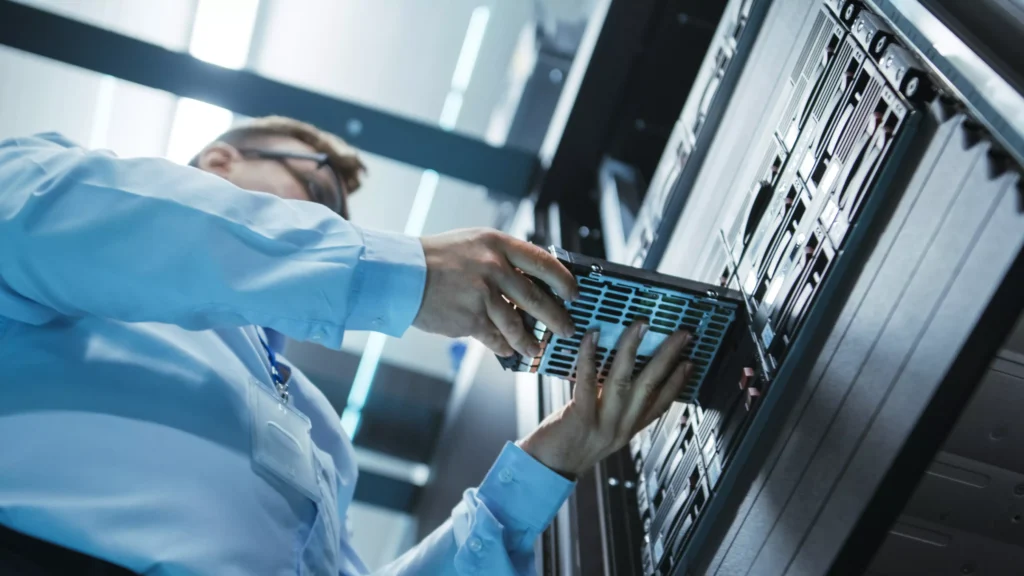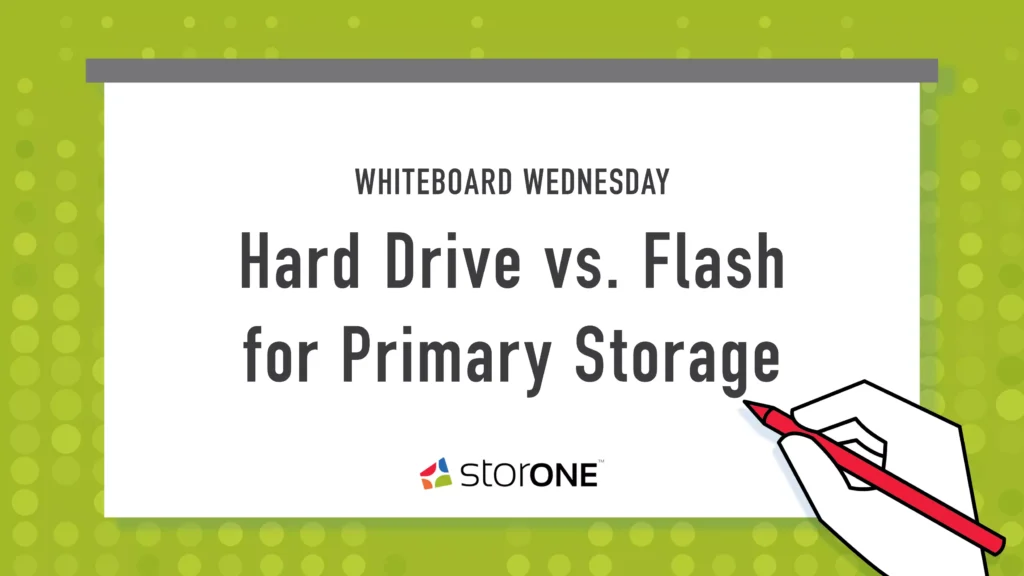Even in production, the case for hard drive storage is a strong one, but several vendors are trying to make a case against its use. Even reputable analysts state that the days of hard disk drives (HDD) are numbered. IT professionals should consider these sources carefully with a high degree of skepticism.
There is a case for hard drive storage in secondary storage applications and primary storage. Indeed, in the face of flash media, HDDs have a different role to play than they did 15 years ago. Still, a change in their role does not mean that HDD storage is in any way obsolete or that IT professionals are doing their organization a disservice by leveraging HDDs. Quite the opposite, IT architects who can properly architect hard disk into primary and secondary storage give their organization a competitive advantage.
The Price Advantage of HDD Storage
Although recently its reached a fever pitch, for almost ten years now, there have been claims that flash storage systems were within a year of reaching price parity with hard disk storage. Even with QLC, All-Flash Arrays are not much closer to price parity now than they were ten years ago. Flash-only vendors continue to make the purposeful mistake of assuming that hard disk technology will stand still and that current hard disk manufacturers will allow their products to stagnate. The opposite is happening. HDD vendors continue to invest in the technology, and HDDs remain the best per GB value in the data center for both primary and secondary storage.
The TRUE Price of a Hard Disk System
Right now, our TRUprice on a hybrid storage array is $199,000. It includes 1.2PB of hard disk capacity and 107TB of flash capacity. It also includes our StorONE Storage Engine, including vRAID, vSnap, and vReplicate. Our industry-leading price on TRUprice on a 1PB all-flash array is $499,000 with the same software and capabilities. That is $300,000 more for less capacity. And, because of StorONE’s Intelligent Hybrid Technology, many data centers will not notice a performance difference between the two. If you want an All-Flash Array, we have a solution; if you want a Hybrid Storage Array, we have a solution. We think the choice should be yours.
Besides noticing the price difference, notice that StorONE provides HDD and All-Flash systems (and Optane). How would the other vendors claiming the end of the HDD even know? They don’t sell HDDs!
The Hybrid Advantage of an HDD
Hybrid Storage automatically moves data from a fast tier to a slower tier. We use this technology in our AFA•next, which transparently moves older data from Optane to QLC. Optane acts as a shock absorber to the more delicate QLC tier. The same software powers our more traditional Hybrid Storage systems. Data is written to a TLC flash tier and then moves transparently to the HDD tier. Writes from the upper tier to the lower tier are sequential, setting the next tier up for excellent read performance.
The question that plagues legacy hybrid storage systems is, “what will performance look like if we access data, not on the flash tier?” It is a fair question. Obviously, in the Optane to QLC scenario, there is almost no noticeable performance difference. However, in hard disk storage, a legacy Hybrid Storage system doesn’t help mitigate the performance delta. They use too small of a hybrid tier, and they do very little to improve the hard disk tier’s performance.
StorONE’s Advanced Hybrid technology resolves these issues. First, StorONE’s Hybrid Storage uses a relatively large flash tier because of our price advantage. In the example above, the flash tier is 107TBs, and the flash capacity is expandable to Petabytes if need be.
Second, we improve the performance of hard disk drives. For most customers, the chances that operational data is not on the 107TBs of flash is minimal, but it can happen, and our engine is ready for it. StorONE spent its first seven years rewriting and flattening the storage stack. Our storage engine reads and writes data more quickly than any other system on the market. On our AFA•next, this means over one million IOPS from just four Optane drives. Our all-flash systems will deliver over one-million IOPS from only 12 NVMe flash drives.
Hard drives are not left out, however. Again, we own all the storage IO elements in our solution. In our Q4-2021 release, we improved hard disk performance by 5X! This performance improvement means that on the rare occasion when an application or user needs data from the HDD tier, it is delivered to them very quickly. The HDD tier is not very busy because of that large flash tier. In most cases, accessing data on the HDD tier, which may be months, if not years old, is not the priority, as is accessing data that is only minutes old. However, most users and applications won’t notice a performance difference because of these advanced storage management factors.

StorONE’s Intelligent Hybrid Technology is also intelligent in how the recall occurs. If the platform senses mostly small block, transactional IO, it promotes the data to the flash tier as the application accesses it. However, if the accesses are large block, sequential, we deliver the data directly to the application. Once you get 20+ hard drives spinning, they can provide the bandwidth these applications need.
Maybe vendors that don’t provide at least an option for hard disk drives do so because they simply can’t figure out the intricate development work required to deliver automatic tiering. Worse, maybe the vendors use flash-only to hide a severe weakness in their code that hard disk technology will expose, like RAID rebuild performance.
The RAID Rebuild Advantage of HDD
Do hard disk drives have a RAID rebuild advantage? Yes, as most customers who need hard disk drives need many of them. If the RAID technology knows how to leverage this reality, then HDDs have an advantage. After a drive failure, the time to return to a protected state is likely the biggest concern of using hard drives. With 16TB and 18TB drives becoming commonplace, rebuild time will only worsen. If they support hard drives, legacy storage systems can take days or even weeks to bring a hard disk-based volume back to a protected state because of their outdated and inefficient software.
StorONE’s vRAID, however, can bring a volume residing on 16TB hard drives back to a protected state in less than two hours, not two days. As density increases on flash, we also see similar concerns about rebuild times with that media. We’ve heard multiple reports of double-digit hour rebuilds with 8TB flash drives. As 15 and 30TB flash drives enter the market, IT can expect multi-day rebuild times from flash. But, StorONE can rebuild flash volumes with 15.3TB flash drives in less than four minutes.
The Software is Key to Experiencing the Advantage of HDD
RAID rebuild times are not a uniquely Flash or HDD problem. They are a software problem. The storage software is the key to getting the full value from the media. That software should be written in a way that gives you a choice to leverage whatever technology enables you to meet both the budget and performance demands of your organization. The storage software should bring out the best from whatever media you choose and do its best to protect you from its weaknesses.
It is Your Data Center
All storage solutions have software as a critical component. If a vendor is forcing you to choose one media over another, it may be because using their software with another type of media exposes their code’s weakness. Even if you want an All-Flash Array (AFA), it makes sense to at least have the option to leverage another form of media in the future. It may be adding a hard disk drive tier for capacity, or it may even be adding an Optane tier for even more performance.
Remember, the choice of which media makes the most sense for your organization is yours, not your storage vendor.






